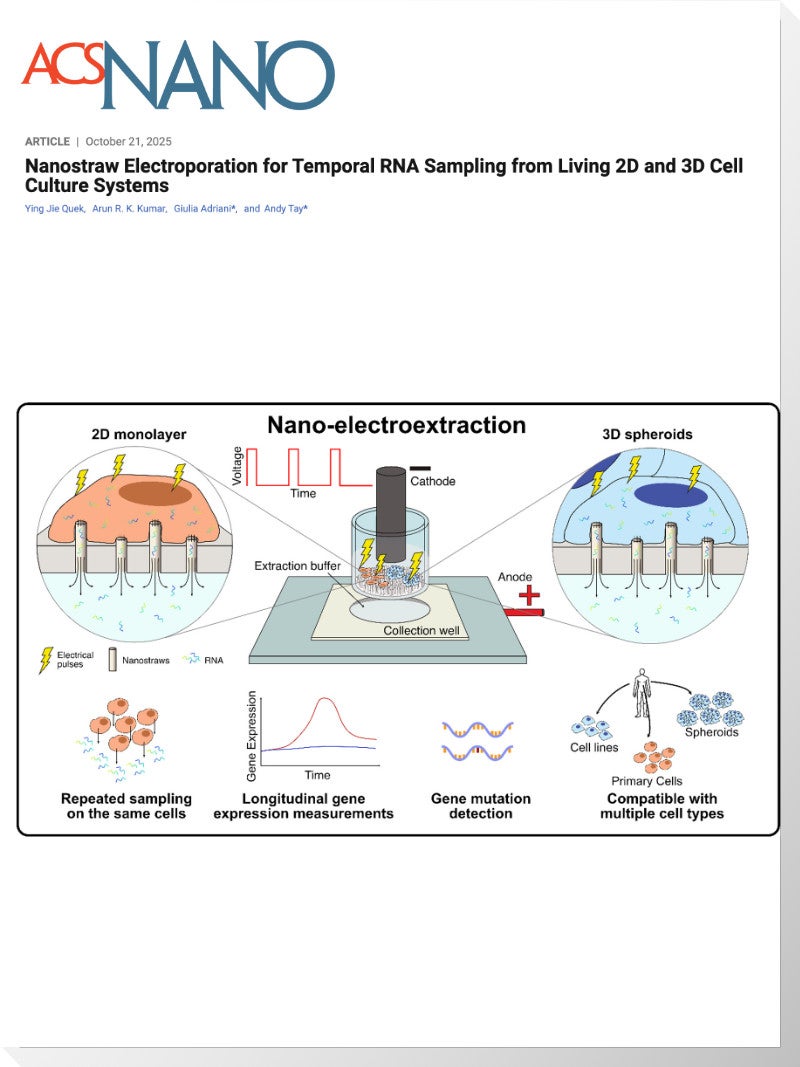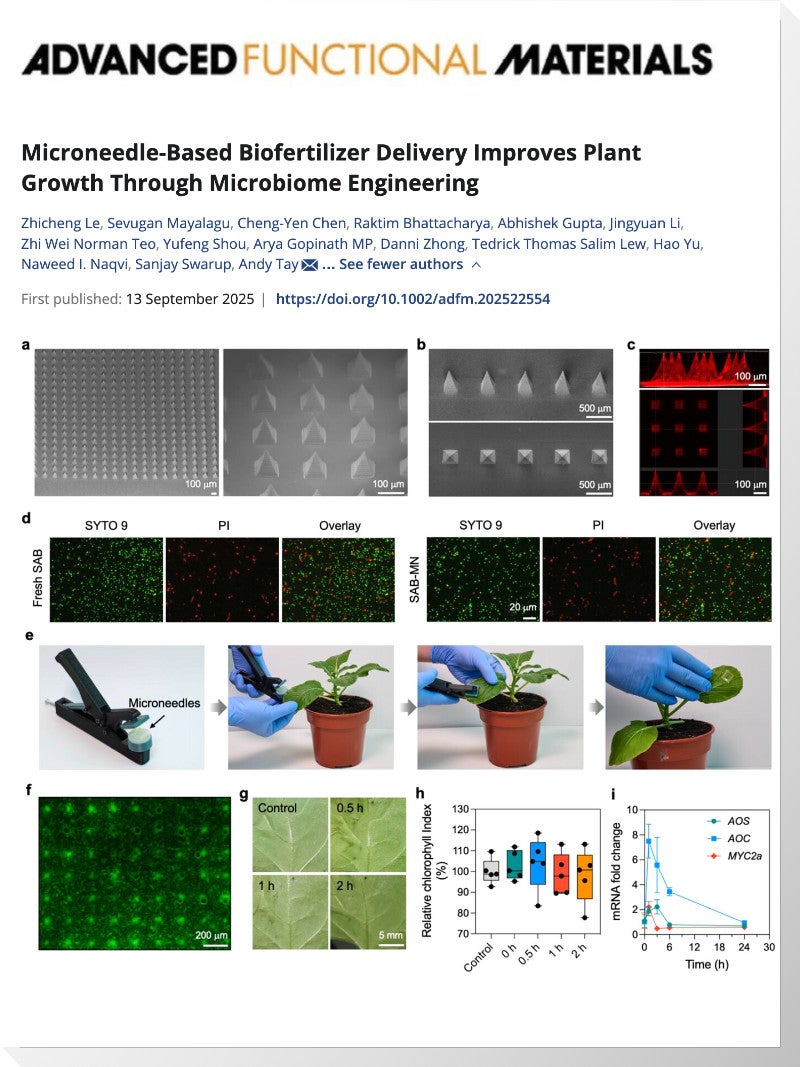Transepithelial potential difference governs epithelial homeostasis by electromechanics
- July 28, 2022

Thuan Beng Saw, Xumei Gao, Muchun Li, Jianan He, Anh Phuong Le, Supatra Marsh, Keng-hui Lin, Alexander Ludwig, Jacques Prost & Chwee Teck Lim
Abstract
Studies of electric effects in biological systems, from the work on action potential to studies on limb regeneration or wound healing, commonly focus on transitory behaviour and not on addressing the question of homeostasis. Here we use a microfluidic device to study how the homeostasis of confluent epithelial tissues is modified when a transepithelial potential difference that is different from the natural one is imposed on an epithelial layer. When the field direction matches the natural one, we can restore perfect confluence in an epithelial layer turned defective either by E-cadherin knockout or by weakening the cell–substrate adhesion; additionally, the tissue pushes on the substrate with kilopascal stress, inducing active-cell response such as death and differentiation. When the field is opposite, the tissue pulls with similar strengths, whereas homeostasis is destroyed by the perturbation of junctional actin and cell shapes, increased cell division rate and formation of mounds. Most of these observations can be quantitatively explained by an electrohydrodynamic theory involving local cytoplasmic electro-osmotic flows. We expect this work to motivate further studies on the long-time effects of electromechanical pathways with important tissue engineering applications.
Link [Transepithelial potential difference governs epithelial homeostasis by electromechanical]






